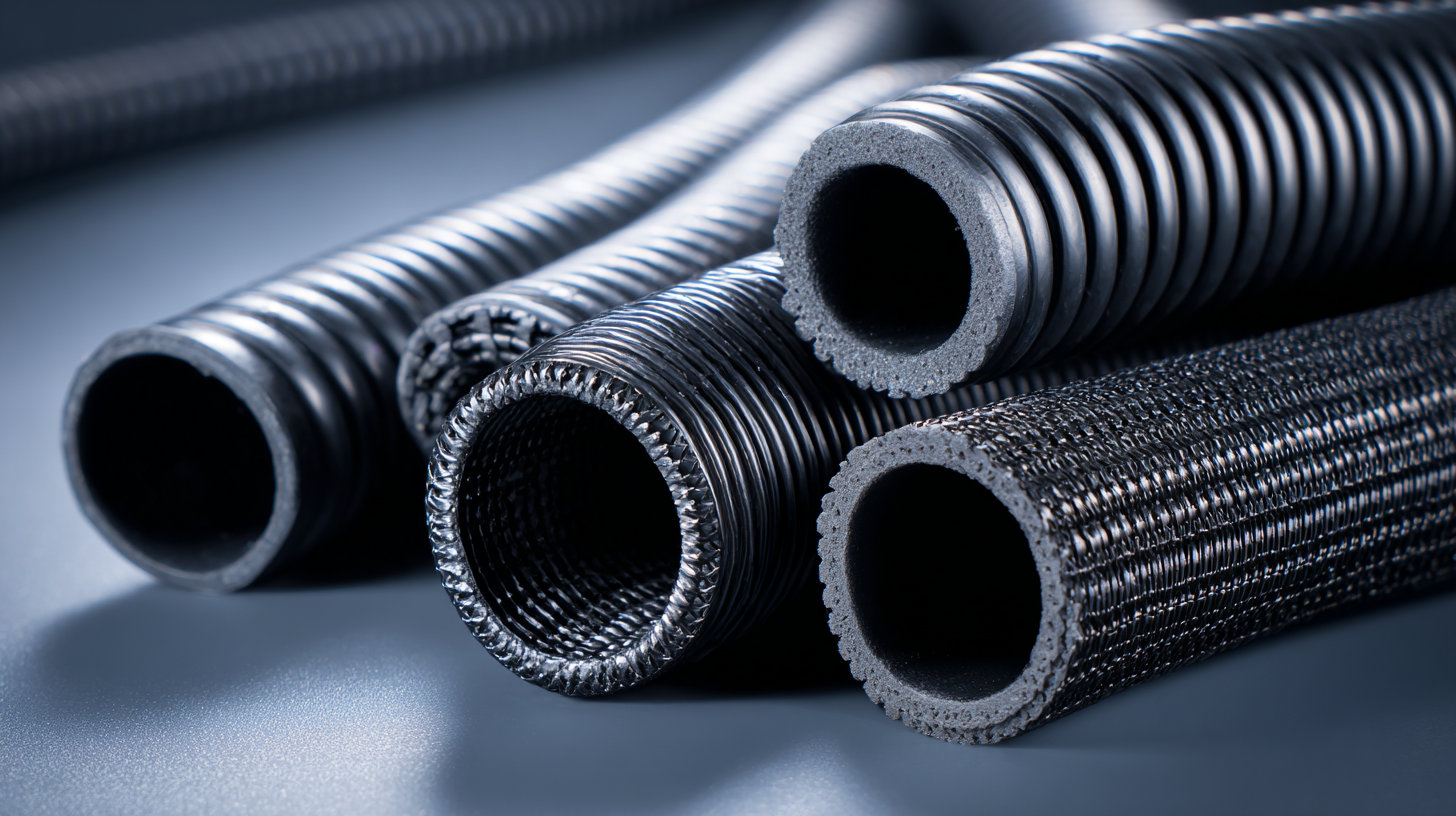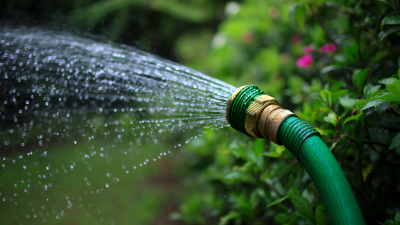Blog 
Understanding the Benefits of 4 Flexible Hose for Home and Industrial Applications
In today's diverse industrial and home applications, the significance of selecting the right materials cannot be overstated. The 4 flexible hose has emerged as a pivotal component due to its adaptability and efficiency across various sectors. According to a recent market research report by Grand View Research, the global flexible hose market is projected to reach USD 14.5 billion by 2025, driven by advancements in manufacturing processes and a growing demand for high-performance materials. This trend underscores the increasing reliance on innovative solutions like 4 flexible hoses, which offer benefits such as resistance to corrosion, flexibility in design, and the ability to withstand extreme temperatures. As industries strive to enhance operational efficiency and reduce maintenance costs, understanding the advantages of implementing 4 flexible hoses becomes essential for both professionals and homeowners alike.

Benefits of Flexible Hoses for Efficient Home Water Management
When it comes to efficient water management in both home and industrial applications, flexible hoses offer a variety of indispensable benefits. One of the main advantages is their kink-free design, which ensures a continuous and reliable flow of water. Unlike traditional hoses that can become tangled and restricted, flexible hoses maintain their shape and flexibility, allowing for easier maneuverability around your garden or workspace. This feature is particularly useful during tasks like watering plants or cleaning driveways, as it eliminates the frustration of interruptions caused by kinks.

Moreover, modern flexible hoses are designed to be lightweight and easy to store, making them practical for everyday use. Many models can expand when in use and shrink down to a manageable size when not required, providing a clutter-free solution to hose storage. In addition, advanced materials and leak-proof fittings enhance their durability and longevity, ensuring that you get the most out of your investment. Whether you are managing water flow at home or tackling industrial tasks, flexible hoses prove to be an efficient and reliable choice.
Versatile Applications of Flexible Hoses in Various Industries
Flexible hoses have become essential components across various industries due to their versatility and adaptability. From agricultural irrigation to industrial machinery, these hoses cater to a multitude of applications. In home settings, flexible hoses are commonly utilized for plumbing solutions, contributing to efficient water flow and easy maneuverability around tight spaces. In industrial contexts, they enable the safe transfer of chemicals, gases, and liquids, ensuring that operations run smoothly and safely.
Tip: When selecting a flexible hose for your specific application, consider the material compatibility, pressure rating, and temperature range to ensure optimal performance and longevity.
 Moreover, the adaptability of flexible hoses allows them to withstand diverse environmental conditions. In HVAC systems, they facilitate airflow and fluid dynamics, enhancing overall system efficiency. In automotive applications, flexible hoses are crucial for fuel delivery and cooling systems. Their ability to bend and stretch means they can be installed in areas where rigid piping would be impractical.
Moreover, the adaptability of flexible hoses allows them to withstand diverse environmental conditions. In HVAC systems, they facilitate airflow and fluid dynamics, enhancing overall system efficiency. In automotive applications, flexible hoses are crucial for fuel delivery and cooling systems. Their ability to bend and stretch means they can be installed in areas where rigid piping would be impractical.
Tip: Regular inspections and maintenance are vital for flexible hoses to prevent leaks and ensure reliability, particularly in high-stress industrial environments.
Choosing the Right Flexible Hose Material for Your Needs
When selecting a flexible hose for home and industrial applications, the choice of material is crucial to ensure durability and performance. According to a report published by the International Flexible Hose and Expansion Joint Manufacturers Association (IFHE), various materials offer unique benefits tailored to specific environments. For instance, hoses made from PVC are well-suited for agricultural applications, as they are resistant to a variety of chemical agents and can withstand abrasive conditions. This adaptability is crucial for ensuring longevity in demanding environments.
In contrast, rubber hoses are often favored in industrial settings due to their exceptional flexibility and resistance to high temperatures and pressures. A recent analysis by MarketsandMarkets indicates that the global industrial rubber hose market is expected to reach $12 billion by 2025, driven by the rising demand for durable and efficient hose solutions across various sectors. Additionally, stainless steel braided hoses are increasingly being used in situations where aesthetics and high-pressure performance are essential. Their ability to withstand extreme conditions while maintaining flexibility makes them a popular choice in both residential and commercial applications. Thus, understanding the specific advantages of each material allows users to make informed decisions tailored to their specific needs.
Improving Safety and Performance with Quality Flexible Hoses
Flexible hoses play a crucial role in enhancing safety and performance across various applications in both home and industrial settings. Their ability to bend and adapt to different configurations allows for more efficient fluid transfer, reducing the risk of leaks and mechanical failures. By using quality flexible hoses made from durable materials, users can minimize the chances of hose ruptures or damage that could lead to hazardous situations, making them a safer choice for transporting liquids and gases.
In addition to safety, quality flexible hoses significantly improve operational performance. They can withstand high pressures and temperatures, ensuring consistent flow rates and reliable service. This reliability is especially important in industrial environments where equipment downtime can result in costly delays. Furthermore, flexible hoses contribute to easier maintenance and installation, as they can navigate around obstacles and fit into tighter spaces, enhancing workflow efficiency and ensuring that systems operate smoothly without interruption.
Cost-Effectiveness of Using Flexible Hoses in Long-Term Projects
In today's competitive market, the cost-effectiveness of using flexible hoses in long-term projects cannot be overstated. Various industry reports indicate that flexible hoses can reduce operational costs by up to 30% when compared to using rigid piping systems. This cost efficiency primarily stems from their lightweight nature, which not only simplifies installation but also minimizes the labor and equipment required for transport. According to a recent study by the Fluid Power Journal, projects that integrate flexible hoses experience a significant decline in maintenance expenses, attributed to the reduced wear and tear on systems, leading to longer product lifespans.
Moreover, flexible hoses are designed to withstand fluctuations in pressure and temperature, making them ideal for diverse applications in both home and industrial settings. Research from the American Society of Mechanical Engineers highlights that flexible hoses can enhance system performance by accommodating movement and vibration, preventing costly failures down the line. With advancements in materials and manufacturing techniques, modern flexible hoses offer improved durability and reliability, ensuring that businesses can confidently invest in their use for long-term projects without the risk of frequent replacements.
Cost-Effectiveness of Using Flexible Hoses in Long-Term Projects
This chart compares the cost-effectiveness and performance metrics of flexible hoses versus rigid hoses across different dimensions. It highlights the advantages of using flexible hoses in terms of initial costs, maintenance, durability, and flexibility.

